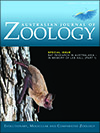
Australian Journal of Zoology
Volume 67 Numbers 5 & 6 2019
Special IssueBat research in Australasia – in memory of Les Hall (Part 1)
The introduction to this special issue of the Journal on Bat Research in Australasia (Part 1) provides an overview of the papers in the issue.
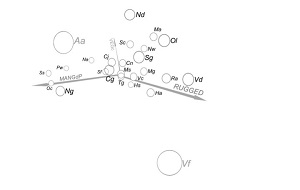
Effective conservation depends on understanding the factors and mechanisms that regulate species composition point-to-point across landscapes. Analysis of zoophagic bat lists from 171 sites scattered across north-western Australia revealed two ensembles: one occupying landward habitats and the other in mangrove forest. Species-rich sites were in complex vegetation structures in rugged cavernous country in the most mesic areas.
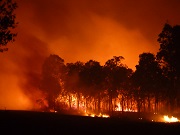
Inappropriate fire regimes are contributing to mammal decline in northern Australia, yet nothing is known of how fire regimes affect insectivorous bats in this region. This study investigated the local effect of fire intensity on bat guilds, and found each guild to respond differently to low and high intensity burns. The findings support the ‘pyrodiversity begets biodiversity’ concept for bats, indicating that a mosaic of fire intensities should be applied throughout the northern Australian landscape to promote bat diversity.
Photo by Julie Broken-Brow.
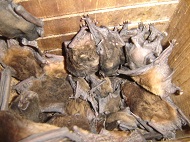
We investigated roost selection by Gould’s wattled bat (Chalinolobus gouldii) using bat boxes across Greater Melbourne. Although five bat species were recorded in the bat boxes, Gould’s wattled bats dominated occupancy records, with strong seasonal patterns, but with little consistency in roost selection criteria across sites. Our results show that bat boxes can provide effective supplementary roosts in urban landscapes for common species with generalist roosting requirements, such as Gould’s wattled bat.
Photo by Robert Bender.
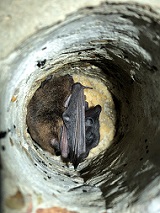
The large-footed myotis (Myotis macropus) is a specialist trawling bat with flexible roosting behaviour. Little is known about how this species selects roost sites in urban landscapes where natural roosts may be limited or absent. We studied roost selection in concrete culverts by M. macropus and identified that roost selection is limited by the availability of microhabitat within culverts. The availability of urban roost sites for this specialist species can be increased by making lift holes available as roost sites.
Photo by Vanessa Gorecki.
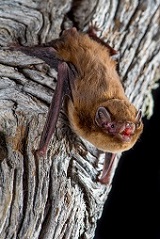
Tree-dwelling bats comprise ~70% of Australia’s bat fauna and, although almost all species are highly social, there have been few studies undertaken to explore their social behaviour. This study examines patterns of social interaction and roost usage in the tree-dwelling chocolate wattled bat, using direct observation and PIT tag monitoring. The results show that these bats live in cohesive societies where all members associate and mutually groom one another when roosting. The apparent breeding system is discussed.
Photo by Bruce Thomson.
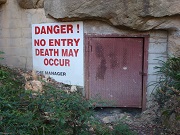
Cave-dwelling microbats are known to occupy abandoned mines, which can be important habitat for threatened species. Monitoring at an abandoned mine in the western Blue Mountains located the use of the adits by three species. Seasonal patterns for eastern bentwing bats were obvious, including a possible small maternity colony of this threatened species.
Photo by Elizabeth Williams.
ZO20055Ghost bats exhibit informative daily and seasonal temporal patterns in the production of social vocalisations
 , Christopher Turbill
, Christopher Turbill  , Kyle N. Armstrong
, Kyle N. Armstrong  , Anastasia H. Dalziell
, Anastasia H. Dalziell  and Justin A. Welbergen
and Justin A. Welbergen 
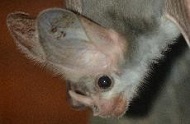
The ghost bat (Macroderma gigas) is a cave-dwelling colonial species that produces a range of social vocalisations. We used long-term acoustic recording to determine whether vocal activity was indicative of reproductive and developmental behaviour inside the roost. Our results suggest that the relative frequencies of occurrence of distinct social vocalisations are indicators of mating and maternity behaviour, providing a novel method of studying the behaviour of the disturbance-prone ghost bat.
Photo by Nicola Hanrahan.
ZO20025Hibernation and daily torpor in Australian and New Zealand bats: does the climate zone matter?
 , Artiom Bondarenco, Shannon E. Currie, Anna C. Doty, Gerhard Körtner, Bradley S. Law, Chris R. Pavey, Alexander Riek, Clare Stawski, Christopher Turbill, Craig K. R. Willis and R. Mark Brigham
, Artiom Bondarenco, Shannon E. Currie, Anna C. Doty, Gerhard Körtner, Bradley S. Law, Chris R. Pavey, Alexander Riek, Clare Stawski, Christopher Turbill, Craig K. R. Willis and R. Mark Brigham
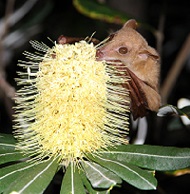
We summarise available data on torpor and heterothermy in Australian and New Zealand bats in the context of three climate zones: temperate, tropical/subtropical and arid/semiarid. Torpor in Australian and New Zealand bats is used by members of all or most families over the entire region, its regional and seasonal expression is often not as expected, but it plays a key role in energy and water balance and other crucial biological functions that enhance long-term survival.
Photo by Fritz Geiser.
ZO20028The influence of meal size on the digestive energetics of Gould’s wattled bat, Chalinolobus gouldii
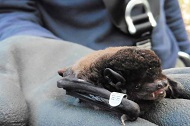
Our study presents findings on the impact of a doubled meal size on the digestive energetics of an insectivorous bat. We studied one of Australia’s most widespread insectivorous bats, Gould’s wattled bat, Chalinolobus gouldii. Contrary to other studies that have suggested there would be an effect of doubling meal size, C. gouldii mostly assimilated energy equally between meals that constituted 10% or 20% of its body weight.
Photo by Melissa Walker.
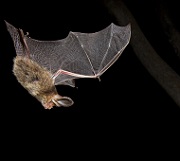
Small insectivorous bats often use torpor – a controlled reduction in body temperature and metabolism – to save energy during roosting, but reproductive female bats might be selected to avoid torpor and hence maximise offspring growth rates. We used temperature telemetry to record thermoregulatory patterns of pregnant and lactating female Australian long-eared bats (Nyctophilus spp.) in the wild. Unlike males in summer, reproductive females typically maintained a warm body temperature while roosting and thermoregulatory costs were likely reduced by huddling in groups within insulated tree cavities.
Photo by Gerhard Körtner.
ZO20046Coronaviruses and Australian bats: a review in the midst of a pandemic
 , Hume E. Field, Manuel Ruiz Aravena, Daniel Edson, Hamish McCallum, Raina K. Plowright and Diana Prada
, Hume E. Field, Manuel Ruiz Aravena, Daniel Edson, Hamish McCallum, Raina K. Plowright and Diana Prada
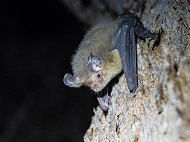
Bats make overwhelmingly positive contributions to ecosystems and economies but can also host viruses that have the potential to cause severe or fatal disease and fatalities in people. While studies of coronaviruses in Australian bats have been limited, transmission of coronaviruses from bats to people in Australia has not been detected. Future investigations should consider links between land-use change, animal trade and spillover of novel pathogens to develop a holistic understanding of interactions among bats, their infections, and their environment.
Photo by Rianne van der Aar.
ZO20046 Abstract | ZO20046 Full Text | ZO20046PDF (773 KB) | ZO20046Supplementary Material (22 KB) Open Access Article



